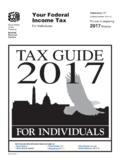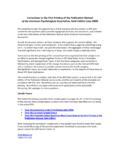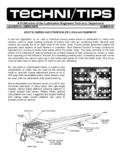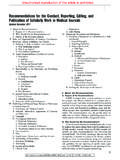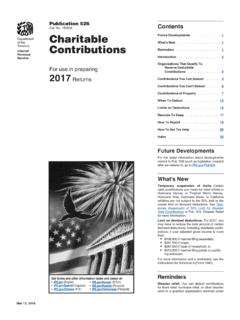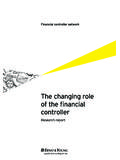Transcription of Should you elect non‐publication? - jackemery.com
1 Should you elect non publication ? Short answer: yes, in most cases, assuming no foreign filing. Longer answer: see below. Jack S. Emery, JD, PhD March, 2013 Under current law in most countries, patent applications are published 18 months after filing. The adopted this practice in 2000. But in the , it s optional: you can elect not to have the application published (as long as you are not also filing in foreign countries). Should you? First, a few of the details about publication : It s the application, not the patent. We aren t talking about the patent being published.
2 If a patent issues, it will be published, always (except in rare situations where national security issues are involved). What we re talking about here is the application being published, usually long before any patent would issue. 18 months from when? The 18 months is measured from the first application in the priority chain. In the common case where the first filing is a provisional application, followed by a non-provisional application just before the provisional year expires, that means publication is 18 months after the provisional filing date.
3 But what gets published is not the provisional, it s the non-provisional. Also it s usually not 18 months, it usually seems to take up to a few months longer than that. What about divisionals and continuation-in-part applications? If it s already more than 15 months past the filing date of the first application in the priority chain, publication will be scheduled (in theory) about 14 weeks after filing. What is it that gets published, and where, and how? applications are published electronically on the USPTO web site. Once published, they are searchable in the USPTO s search database and all of the commercial patent search databases.
4 This includes the written description, drawing figures, initial claims, and abstract. But that isn t all After publication , the whole file becomes accessible. The USPTO maintains a web-accessible database, PAIR (for Patent Application Information Retrieval), that includes all the paperwork relating to every patent application. Until an application is published, only the applicant (or applicant s attorney) can access the file on PAIR, but once the application is published (or a patent issues), the entire application file becomes accessible. That includes all the office actions, the applicant s responses, any amendments and it also includes the provisional application if there was one.
5 Non- publication requires an election. In other words, the default setting is publication if you do not file the election, the application will be published. However, filing the election amounts to checking a box on the Application Data Sheet, which Should always be filed with a new application anyway, so no extra work or cost is involved. You can also elect early publication . If you decide that you like the idea of having your application published, you don t have to wait 18 months you can request early publication . So what are the pros and cons?
6 First, I ll review some of the claimed advantages and a few of what I see as disadvantages, together with my take on each one (beneath, in italics). Then I ll mention a few other considerations, and close with my own opinion. Advantages of publishing It acts as a defensive publication . Once published, a patent application becomes part of the body of prior art against which other applications are judged for novelty and obviousness. This strikes me as a weak reason. If it is in your interest to make a defensive publication , there is no reason to wait 18 months for the patent office to do it.
7 Better to do it yourself, so you can control what goes into it and get it done immediately. (Note: publications of any kind are potentially hazardous to your patent health. Consult your patent attorney before you do it.) Pre-issuance damages. Damages for infringement can include royalties for the period after publication but before issuance of a patent, if the application is published. If the application is not published, you cannot collect damages for infringement that occurs before the patent issues. This advantage is mostly an illusion in my opinion.
8 You can t sue for patent infringement until you have an issued patent -- publication or no publication . Nowadays, it often takes at least two or three years for an application to float to the top of the queue and get examined so that a patent can issue. That gives copyists a multi-year window in which to copy your invention and make as much money as possible before you can do anything about it. In theory, pre-issuance damages give you a (somewhat puny) weapon against that kind of rip-off: after the patent issues, you can sue for a reasonable royalty for infringement that happened before the patent issued but after the application was published.
9 But only if the issued claim that you are suing on is "substantially identical" to a claim in the published application, and the infringer is given actual notice of the application. As a practical matter, claims are nearly always amended during prosecution, so they usually won t be substantially identical. Often, you won t find out about the infringement until it s already been going on for a while, and you can t give actual notice until you know who to give notice to. Worse, especially for easily copyable products, the infringer may be a shell corporation whose only business is infringing your patent.
10 It won't have any assets for you to collect from, and probably won't even bother to respond to the infringement suit. For all these reasons, pre-issuance damages are a poor solution to the problem of pre-issuance infringement. Better (usually) to apply for accelerated examination and get the patent issued as soon as possible. Another reason why this advantage is illusory is that even after electing non- publication , you can change your mind and get the application published within about four months with a simple request to the PTO. So if an infringer appears, you have only lost a few months of damages, assuming you eventually collect any.
